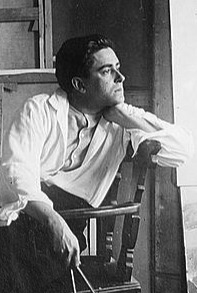
Francis Picabia
Francis Picabia, a French artist and a significant figure in the Dada movement, possessed a versatile ability to shift across aesthetic models. He laid a blueprint for future iconoclastic painters. Picabia gained recognition for a diverse range of work, from unconventional, humor-tinged, and erotic depictions of machine components to text-based artworks that prefigured aspects of Conceptual art.
Biography of Francis Picabia
Born in 1879 in Paris, Francis Picabia was the only child in his family. With parents hailing from prominent European lineages, he was raised in a prosperous household. The family's affluence enabled Picabia to lead a lavish lifestyle. When he was seven years old, his mother succumbed to tuberculosis. The following year, his grandmother also passed away. In the wake of these losses, his father, the chancellor of the Cuban Embassy, his uncle Maurice Davanne, a curator at the Bibliothèque Sainte-Geneviève, and his maternal grandfather Alphonse Davanne, a wealthy businessman, became his caretakers. Their residence was known as the "house of quatre sans femmes" or "four without women."
Picabia's uncle, an art enthusiast and collector, immersed him in classical works by French painters like Fèlix Ziem and Ferdinand Roybert. His grandfather, an ardent amateur photographer, introduced him to photography, and he would later use a camera to aid his work.
In 1895, Picabia enrolled at the renowned École des Arts Decoratifs, where past attendees included Vincent van Gogh and Henri Toulouse-Lautrec. Following that, he collaborated with fellow students Georges Braque and Marie Laurencin at Fernand Cormon's studio for four more years. During this period, he predominantly produced watercolors and exhibited once at the Salon des Artistes Francais. He eventually transitioned from traditional watercolor painting to Impressionism, influenced by artists like Camille Pissarro and Alfred Sisley.
In 1905, Picabia held his inaugural solo exhibition at the Galerie Hausmann in Paris, showcasing 61 landscape paintings that garnered considerable acclaim. Subsequently, he gained widespread popularity in the art scene, presenting solo shows in Paris, London, and Berlin. Nevertheless, in 1909, he departed from the style that initially brought him success and veered toward more avant-garde approaches, including Fauvism.
From 1909 to 1913, Picabia faced challenges in identifying the most fitting style to express his evolving emotional and intellectual concerns, along with inner experiences and external forms. He explored various styles, experimenting with Fauvism, Cubism, and abstract art. This period marked a decline in the attention he had previously received from the art world. In 1911, he forged a friendship with Marcel Duchamp.
By 1912, Picabia embraced the more radical approach of Cubism, drawing from memories and experiences rather than relying on nature for inspiration. When World War I erupted, he sought refuge, initially in Barcelona, then in New York, and later in the Caribbean. The war pushed him to find another style that would reflect the era of industrialization, leading to the creation of his machine paintings, known as mechanomorphs, which were displayed in 1916 at the Modern Gallery in New York.
The onset of World War II in 1939 brought devastation to Picabia's life, resulting in a more modest lifestyle. For the first time, he relied on selling his paintings as a primary source of income. After the war, he was arrested by French authorities over allegations of collaboration with the Vichy (French Nazi) government during the war. Although he was released without conviction, his reputation suffered, and he never returned to France after 1945.
In the later stages of his extensive career, Picabia once again shifted directions, creating abstract artworks. He continued exhibiting in prominent Parisian galleries and publishing his writings until 1951, when health issues, specifically arteriosclerosis, hindered his ability to paint. Before his passing in 1953, he referenced Nietzsche's words, stating, "Where art ends, where life begins, I am the poet of my life."
Years:
Born in 1879
Country:
France, Paris
Gallery: